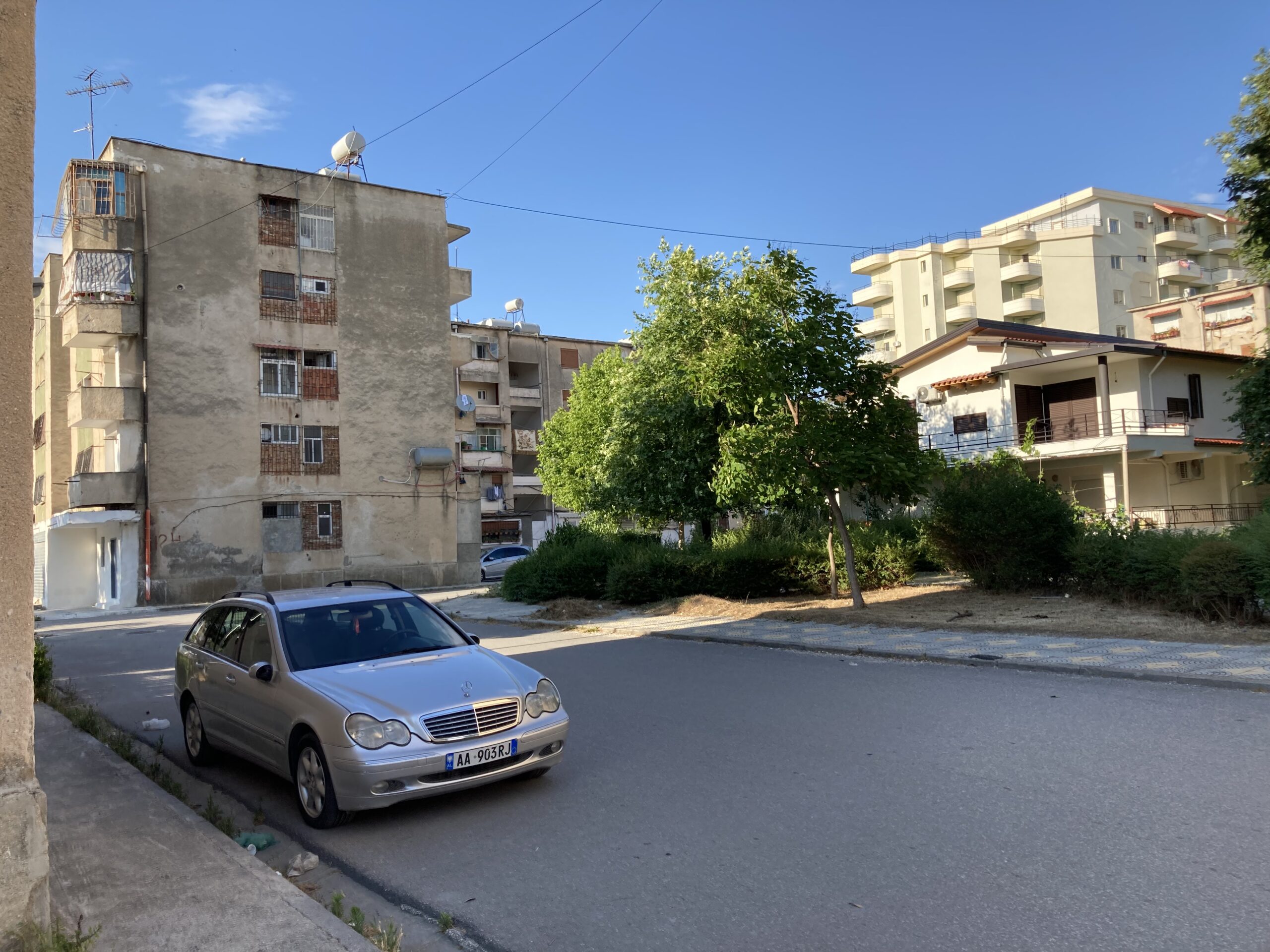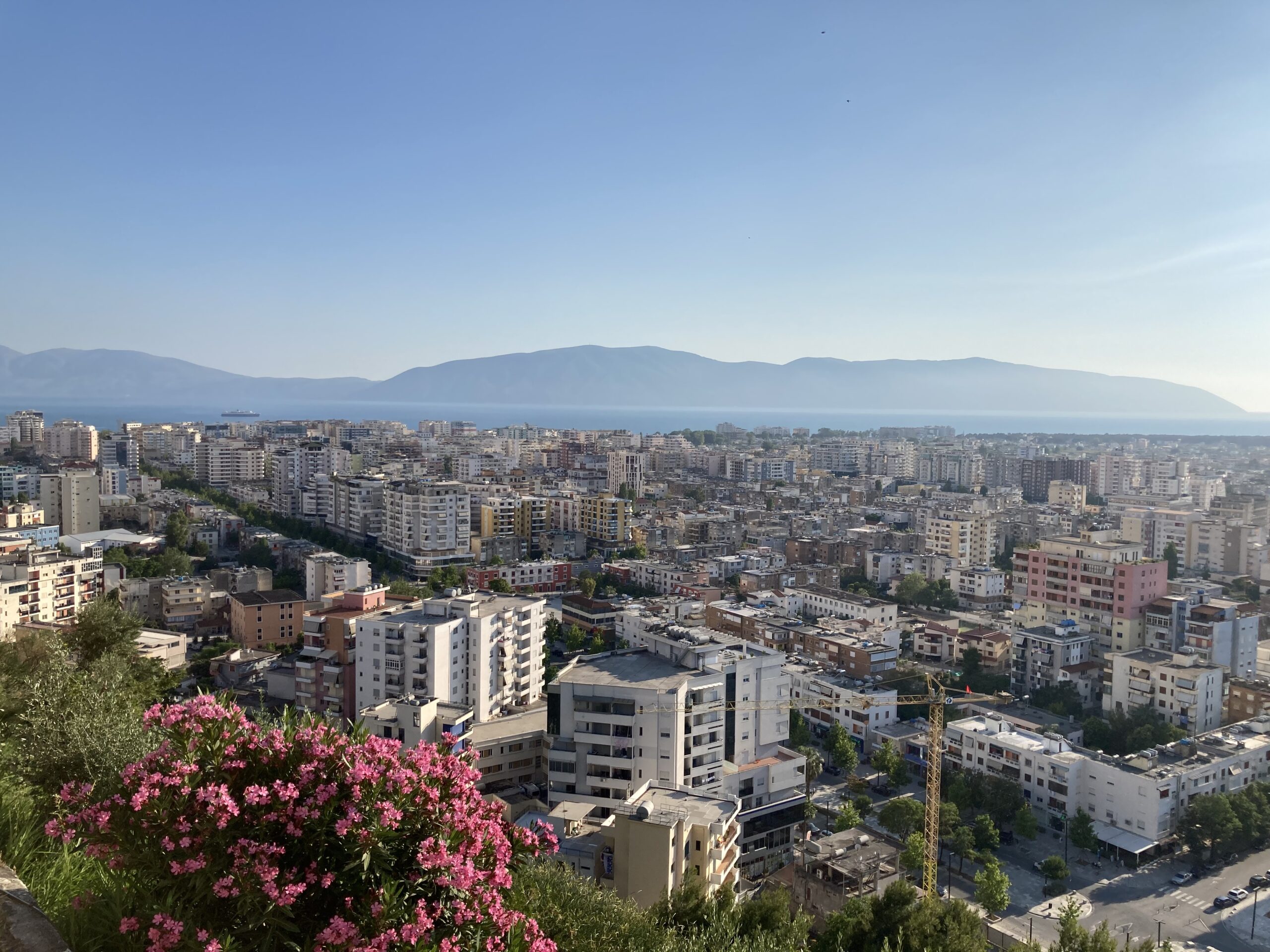Vlorë is the city with two seas as its locals often like to call it. This mid-sized town is found somewhere in between the Adriatic and the Ionian coastline, at the confluence of the two seas, hence its “title.” However, there is more to it than it meets the eye at first glance. Vlorë is also somewhat in the middle of what one may call the whole North and South or more properly the Gheg and Tosk divide in Albania. These are, of course, the main dividing lines of Albanian language, its two main dialects with their own sub-dialects within them. Being so evenly distanced to the “core” of both dialects (and the slightly different cultures that they bring with themselves due to their different topographies and somewhat different histories) one can consider the linguistic situation in Vlorë to be a rather transitional one.
This oddity is, likely, one of the reasons why it was designated as the first capital of an independent Albania in 1912. It is neither too “northern” nor too “southern,” being smack dab in the middle of the country. Of course, the current geographical position of the city vis-à-vis the modern political borders may make this harder to see but do trust me when I say that historically speaking, it was pretty much in the middle of a greater geography in which Albanian speakers lived in abundance. Being caressed by two pristine seas, hosting what many would consider to be the Albanian Revolution and acting as a unifying centre for both the Gheg and the Tosk speakers, there sure are a lot to say about Vlorë, and do read on to find out more about it right below!

Spacious private condos, small but spirited communist-era communal apartments, soulless yet more comfortable modern-day apartment complexes… If I had to pick a single photo to show about Vlorë, this would be it. It is certainly one of the better places out there to witness the rapid changes in the recent history of Albania. Of course, the rampant building of skyscrapers in the capital works best, but Vlorë’s quite varied architectural landscape does it justice too.
Vlorë is home to some 130000 people, but it is very hard to see that for yourself when you walk around there on a June afternoon. The youth of the city is nowhere to be found, presumably they continue their studies in the capital, or work in one of the many European cities that are known for their hardworking Albanian communities. Some may be partying hard in the more southern cities like Sarandë, which is quite unlike Vlorë in the sense that it is far less sleepy and more “sleepless.” Due to the heat of summer, what little portion of the official population that lives in the city at that time only really comes out after the sunset, when central areas like the city centre, or the coastal area near the promenade start buzzing with life.

Much like any other city in Albania, Vlorë too is home to many different religions and their many denominations. Pictured here is a Bektashi Temple next to the Kuzum Baba Shrine atop a hill that overlooks the city. Of course, churches and mosques too can be seen quite commonly all around. Overall, however, I do think that Vlorë was a bit more on the Christian-side of the scale whereas northern cities like Krujë, Berat, or Tirana were more on the Muslim-side of the “spectrum.” The word “halal” is ubiquitous in these latter towns whereas I saw it just once in Vlorë. Pork is readily available all around, and crosses are being carried by many. This may be because the locals themselves are more prone to be Christians, or because most of the tourists here (mainly Italians and Greeks) are so themselves but no matter the cause, this certainly was the impression it left on us. Since gyros was extremely easy to find all around as well, often I felt like I was in Greece again, which was a very welcome feeling to say the least!
Though the people of Vlorë are kind and extremely hospitable, it is likely to run into more tourists than locals in there so it may be wise to share a few words about those as well. Italians and Greeks, but mostly the Italians, are the name of the game here for anyone who wants to make a living in the hospitality sector. As a result of that, and the Italianization of the country during the early 20th century, Italian is spoken by many. Even our host was an Italian, renting rooms to mostly other Italian and some Balkanian tourists, with the odd Turks (us) being present there as well.
There seems to be a quite a lot of ferries that bring the two sides of the Adriatic together, making it easy for Italians to cross it over. An international airport near the city is also under construction, which can only bridge that gap faster and bring in even more tourists in the upcoming years to this part of the country. Greece is a few hours away from the city by bus or car, and if it was not for the border crossing, I am sure that people could drive all the way to and from Athens in a few hours. This means that there is a lot of tourist traffic coming from the south as well.
Being the first capital of Albania means that there are quite a lot of interesting sites to explore in Vlorë. However, it would be wise to add that all of them combined cannot cost you more than an entire day to see them properly. This does not mean that I would recommend people to just visit the city for a single day. It is a sleepy little town, meaning that having a short sea-holiday there is certainly a decent choice if you do not want to be bothered as you swim or sunbathe. This is exactly what we did, and though the sea itself was not the best we swam in, it certainly did the job.
There are two notable beaches in the city, Plazhi i Ri to the south and Plazhi i Vjeter near the centre. Both beaches offer some amenities, though the former is the newer and the more popular one. Both seas are moderately clean, but in both cases the nearby water-treatment facility may cause some bad odour if there is a malfunction in it, or if the winds are gusting extra hard that day. Despite swimming in these beaches for a week, nothing bad happened to either one of us so the water is, for the most part, quite clean.

I would consider Vlorë to not only be a city of two seas, but also a city of two centres. Though the coastal centre with its relatively recently built promenade and extremely tasty spots for good food and a good mood is what I would consider to be the true heart of the city, there does appear to be another (and actually official) city centre to the north. It too is quite recently renovated, and is quite vibrant, and beautiful if you are into colourful streets. There seemed to be quite a lot of popular spots there too, but we never had the chance to visit it properly given how much more distant it was to us compared to the coastal one.
If you are not visiting Vlorë to swim in peace, or if you just want to do something extra when you are not swimming, then as I mentioned before you are in luck. The café next to the Kuzum Baba shrine offers fantastic views of the city whilst also letting you sip a decent selection of mostly coffee-based drinks. The road uphill gets you through some of the most local parts of the city, which certainly was nice to see as well.
The official city centre is home to the Independence Monument and the Muradie Mosque (one of the earlier works of Mimar Sinan, the Ottoman architect of great projects like the Süleymaniye and the Selimiye Mosque), which are both quite cool but merely offer a short distraction to one on their way to or away from the official city centre. The more coastal and southern centre offers the National Museum of Independence, as well as the relatively recently organized Lungomare promenade. Both are a must visit when you are in Vlorë, but once again, they are hardly time consuming on their own. If you have a car, even all the nearby sites of significance (like the Zvernec Monastery, read all about it HERE) can be visited in a day if need be.

Vlorë may not be a bustling metropolis, but it sure is not a small town as well. Looking at it on maps, I assumed that it was extremely walkable, which is not necessarily false but walking all around it in summer may end up giving you a sunstroke as it did to me! Unfortunately, trees are few and far between, and most streets are completely devoid of any shadow. This huge area is, at best, a third of the city too so make sure to plan carefully before attempting any “full city tours” in a single day like we did, which ended up being somewhere around 30 kilometres…
All in all, though there is some stuff to do there, and its boat tours alone offer some of the finest times you can have in Albania, it would be unwise to visit Vlorë anytime other than summer when you can enjoy two of its arguably best offerings, extremely well-done seafood, and quiet beaches. Vlorë is not necessarily a city I would die to go back to, but I know for a fact that I would sacrifice quite a few days out of my lifespan (maybe three?) to go back and enjoy some more calamari and seafood pasta from Restorant Tradicional Zgara after a long day spent exploring the Sazan Island and the Karaburun Peninsula. It most certainly is a very good city to add to your itinerary if you intend to visit the country in summer, and also swim around a bit, but beyond that it is best visited along the route to other landmarks around Albania.
